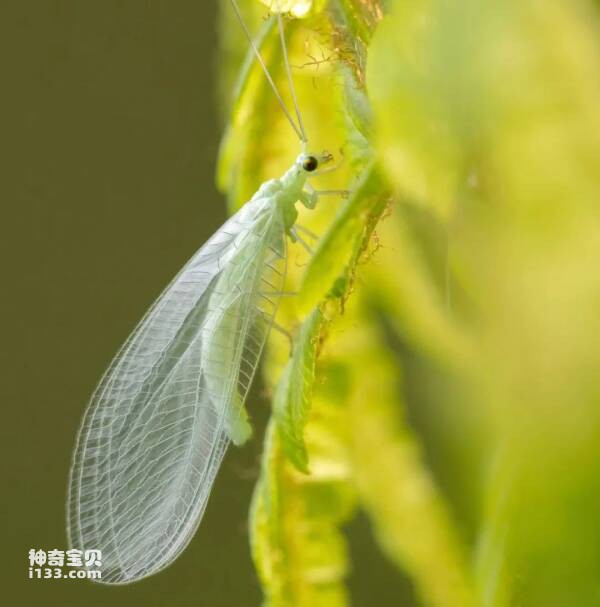[Economic Significance] Neuroptera includes lacewings, ant flies, mantises, mealy flies, water flies, etc. Adults and larvae are mostly terrestrial and are predatory, preying on soft bodies such as aphids, ants, spider mites, and scale insects. Insects and various insect eggs are of great significance for controlling insect populations and maintaining ecological balance. In recent decades, our country and many other countries in the world have successfully applied Neuroptera to biological control of pests.

[Identification points] Under-head mouth, chewing mouthparts. The forechest is often short. The two pairs of wings are very similar in shape, size and veins. The wing veins are dense and numerous, reticular in shape, and branched at the edges. A few species have few and simple wing veins. 2 claws.
The larvae have three pairs of well-developed thoraxes and one tarsal segment. Double piercing and sucking mouthparts.
The characteristics of this order can be summarized as follows: lacewings, ants, and larvae are of the order Neuroptera, with special forked veins on the outer edge; chewing mouthparts with a lower mouth type, and prey on aphids, scales, and red spiders.
[Classification and introduction to important families] There are about 4,000 known species of Neuroptera in the world, which can be divided into 3 suborders, 6 superfamilies and 20 families. The important subjects are now introduced below.
(1) Coniopterygidae
The body is tiny, and all or part of the body and wings are covered with white wax powder. The antennae are long and bead-shaped. There is no single eye, the wing veins are simple, and the edges are not bifurcated. There are more than 250 known species in the world, the common ones include Conwentzia sinica Yang and so on.
(2) Chrysopidae
Most species are green with metallic or copper-colored compound eyes. The tentacles are long and filamentous. There are less than 30 transverse veins in the leading edge area of the wings, which are not bifurcated. The larvae are elongated, with pointed ends, and hairy tumors on both sides of the chest and abdomen. They prey on aphids and are called aphid lions. There are more than 12,000 known species in the world, and the common ones in my country include giant lacewings, Chinese lacewings, etc.
(3) Hemerobiidae
Small to medium sized, usually brown. No single eye, long antennae, rosary-shaped. The wing veins are often hairy, the R veins of the forewings are multi-branched, and the transverse veins on the front edge are bifurcated. The larvae are elongated and have 3 single eyes on each side. There are more than 800 known species, including the brown brown fly, which is common in my country.
(4) Myrmeleontidae
The antennae are short, equal to the sum of the length of the head and thorax, and the ends are enlarged. The shape is very similar to that of a damselfly, with long and narrow wings, inconspicuous wing moles, and a long mole under the wing chamber. The larvae have excavating hind legs. Most species wait for prey on the ground or in buried sand, or chase prey on the ground. Some species capture prey through traps. The larvae hide at the bottom of the funnel-shaped trap and feed on ants and other insects that fall into the trap, so the larvae are called ant lions. The larvae move backwards, so they are also called "retrograde insects" and can be used in traditional Chinese medicine. Common ones in my country include ant flies, East China ant flies, etc.
(5) Ascalaphidae
It has a large body and looks very much like a dragonfly. The antennae are club-shaped and longer than half the body length. There are obvious wing nevus, and the wing chamber under the wing nevus is short. There are more than 400 known species in the world, mainly distributed in temperate regions. Common ones in my country include yellow-flowered butterflies and horn flies.
animal tags: Insects Neuroptera lacewings
We created this article in conjunction with AI technology, then made sure it was fact-checked and edited by a Animals Top editor.